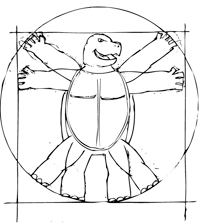Tuesday, February 5, 2008
Reaction to Lynn's Folds, Bodies & Blobs
Something that crossed my mind through all the talk of static architecture versus dynamic motion based forces - architecture's role in the built environment might just be to be static. The mention of forces and vectors creating attractions for the movement of splines and particles made me wonder why we must translate the spline into a physical object if the spline itself is not physical itself. We could consider the dynamics of the indefinite, or live loads, of a structure to be the spline. The movement of people through a building can be determined by the very static positions of the architecture. The motions that are created imply a space, an interaction between definite and indefinite energy - the static and dynamic. The first part of our project studies the space created during a particular time by the motion of a body. My project analyzes a tennis serve motion. The rules of a tennis match create implied space through lines on the ground. If my foot steps over that line it has crossed a threshold that will penalize me in the match. I did not physically trespass a plane or volume, it is visually and chronologically designed. The misinterpretation that the ability to create a visual aid to understand the implied space created by a body forces us to rethink the shape and constraints of the physical environment is an extrapolation gone awry. A tennis match draws a close parallel to the interpretation of space by one of Prof. Eisenbach's students during her summer course two summers ago. She created planes and spaces with her body according to sticks on the ground. If one were to splice her movements and occupy the space she created through the time of the performance one would have an interesting sculpture that would provide the same information as the performance itself in a different form. Yet, it in no ways implies that we must create a structure that encloses that space. This is a jump that architects often take with their desire to control space and function. The studies of animation and non-static forms can very well be used as guidelines for design, just as the designed form can be used as a guideline for function. Basically, the new technology available to us today provides us more information than ever before, we must now work to analyze and properly utilize this information to design, not just try to replace our analytical abilities to the computer.
Subscribe to:
Post Comments (Atom)

No comments:
Post a Comment